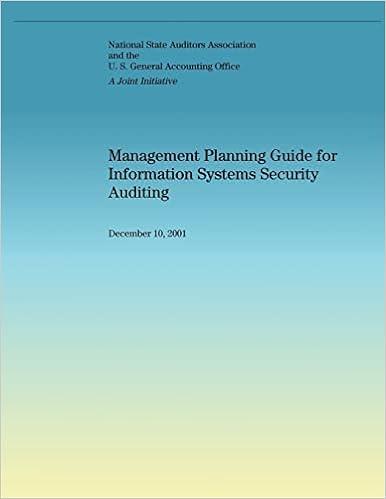Question
MRP: Consider the MPS, BOM, and inventory data shown. Master Production Schedule: Table below shows the MPS start quantities (planned order releases). Time Period 1
MRP: Consider the MPS, BOM, and inventory data shown.
Master Production Schedule: Table below shows the MPS start quantities (planned order releases).
| Time Period | 1 | 2 | 3 | 4 | 5 | 6 | 7 | 8 |
| End-Item P1 MPS Start Quantities |
| 20 |
|
| 40 |
| 30 |
|
| End-Item P2 MPS Start Quantities |
|
| 25 |
| 15 |
|
| 20 |
Bill of Material: - Item P1 uses 1 each of subassembly A and 2 each of component B.
- Item P2 uses 1 each of subassembly A and 3 each of component C. - Subassembly A is made from 3 each of component D.
Selected Inventory Data:
| Item | Lot Size Technique | Lead Time | Scheduled Receipts | On-Hand | Safety Stock |
| A | L4L | 1 |
| 30 | 5 |
| B | FOP, P=3 | 2 | 20 in period 2 | 20 |
|
| C | FOQ=75 | 1 | 75 in period 1 | 10 |
|
| D | L4L | 2 |
| 40 |
|
1, Construct the MRP tables for items A, B, C, and D using the preceding information. The key row of interest is the Planned Order Releases; you may choose not to complete the Net Requirements Row. Specify all Action Notices corresponding to actions that must be implemented in Week 1 or earlier. If appropriate, use the MRP tables provided at the end of this assignment. Acronym Key: GR = Gross Requirements; SR = Scheduled Receipts, POHEI = Projected On Hand End-of-period Inventory, NR = Net Requirements, PR = Planned Receipts, POR = Planned Order Releases
2. What is MRP-II and why was it created? What does ERP add to MRP-II?
Step by Step Solution
There are 3 Steps involved in it
Step: 1

Get Instant Access to Expert-Tailored Solutions
See step-by-step solutions with expert insights and AI powered tools for academic success
Step: 2

Step: 3

Ace Your Homework with AI
Get the answers you need in no time with our AI-driven, step-by-step assistance
Get Started


